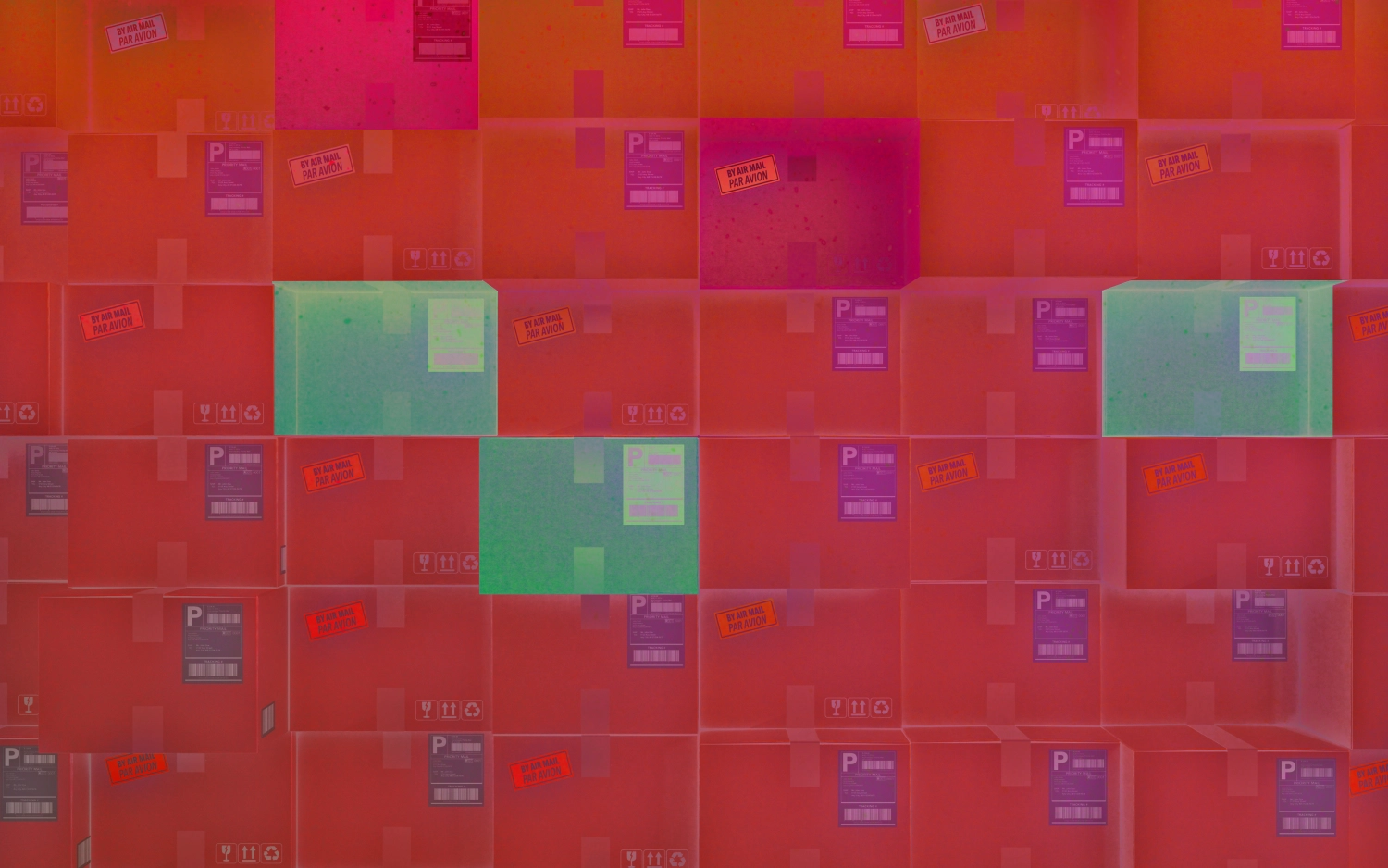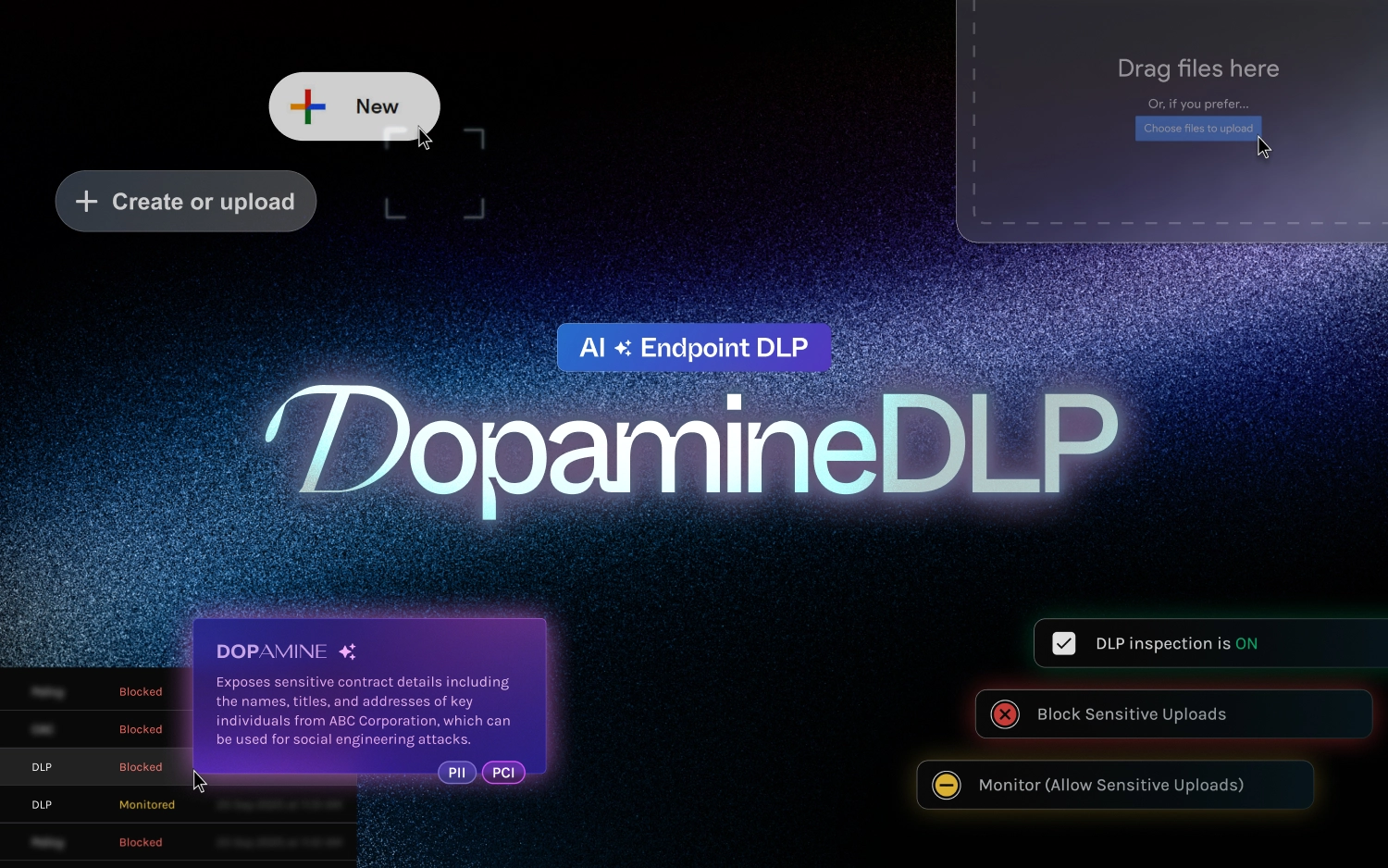DNS Filtering vs. Secure Web Gateway: 7 Hidden Gaps That Hurt Hybrid-Work Security in 2025

DNS filtering looks only at the first step of every connection—the domain lookup. If the domain name is known-bad, the request is blocked. Anything the DNS layer can’t see (the full URL path, the file being downloaded, the data you’re uploading) goes un-inspected. Cisco Umbrella markets this as “DNS-layer security” for a reason: the protection stops at the domain boundary.
A Secure Web Gateway (SWG) decrypts, inspects and enforces policy on the entire HTTPS session. Traditional SWGs live in cloud proxies; dope.security runs the SWG directly on the endpoint, so packets take the shortest path to the Internet while still getting full-stack inspection.
Why hybrid work has outgrown DNS-only defenses
Remote staff open SaaS links in Slack, paste SharePoint URLs in email, and join video calls from coffee-shop Wi-Fi. All of that traffic is HTTPS-encrypted, travels over random ports, and often hides behind common domains (think googleusercontent.com or amazonaws.com). A domain-only filter can’t see what’s really happening, and attackers know it.
The 7 gaps you can’t ignore
- No SSL/TLS inspection: DNSFilter’s own help-center article is blunt: “DNSFilter does not have access to web traffic packets…SSL inspection would happen above DNS resolution.” What it means: phishing pages delivered over HTTPS sail straight through as long as the root domain isn’t black-listed.
- Only domain-level blocking: Community admins regularly complain they can’t block a single URL path like example.com/login/reset without blocking the whole site. SWGs, by contrast, evaluate the full URL, headers and payload.
- Blind to Shadow IT and unsanctioned SaaS: DNS filters can tell you someone resolved dropbox.com; they can’t see that the user just accessed via a personal workspace and uploaded source code. Modern SWGs like dope.security decode SaaS APIs and apply context-aware controls (who, what file, which action). Industry analysts call SWG “the minimum functionality” required for SASE exactly for this deep visibility.
- No Data-Loss Prevention: Because the payload is invisible, DNS can’t inspect credit-card numbers in a POST body or spot customer lists in an upload. Dope.security not only has URL Filtering SWG capabilities but also LLM Powered DLP to scan, identify and remediate access to sensitive files all without any DLP rule writing.
- Threat intel limited to whole domains: Attackers increasingly host one malicious page in an otherwise benign domain (think compromised WordPress sites). DNS filtering must choose: block the whole domain (false positives) or allow it (false negatives). SWGs block at the page or subdomain level.
- Encrypted DNS (DoH/DoT) punches a hole: When the browser sends its queries inside HTTPS tunnels, DNS filters never see them. Research on encrypted-DNS bypass shows controls “fail silently,” leaving users exposed. Fly-Direct inspects traffic after the DNS step, so DoH/DoT is a non-issue.
- No user or device context: DNS policies apply to an IP or network, not to Alice on a managed Mac. dope.security ties policy to the user or user group, enforcing different rules for a contractor on a marketing intern on their MacBook.
Performance reality check
A common objection is speed: “DNS filtering is lighter.” True. Resolving a domain is milliseconds. But because the Fly-Direct SWG from dope.security inspects on the device instead of sending traffic to a cloud proxy, real-world round-trip time stays under 40 ms. That’s within 10 ms of raw Internet latency and still 3-4x faster than POP-based SWGs.
Direct From a Customer — from DNS to Fly-Direct
An American manufacturer with 3,200 hybrid employees was relying on Cisco Umbrella in DNS-only mode. During red-team drills, 11% of users reached the phishing landing page. After a two-day Fly-Direct pilot (no network changes, silent MDM push) click-through dropped to 4.6% and zero credentials were posted—because the SWG blocked the HTTPS POST, something the DNS layer never saw.
What about…
- Is DNS filtering ever “enough”? It’s a great first line of defense for branch routers or IoT, but the minute users work remotely or share files in SaaS apps, you need full traffic inspection.
- Will local SSL decryption break privacy laws? Keys and decrypted payloads never leave the device with dope.security, so you avoid cross-border key-store headaches.
- Does Fly-Direct slow browsing? CPU overhead is ~2% and median RTT stays < 40 ms—effectively noise-level for users on modern broadband.
The takeaway
DNS filtering is the security equivalent of checking the envelope on a suspicious package; a Secure Web Gateway opens it. In 2025’s hybrid-work reality—encrypted, API-heavy, and SaaS-centric—you need to see inside. Dope.security’s Fly-Direct SWG lets you do that without adding a cloud proxy hop, so you keep the speed of DNS filtering and gain the deep control your users demand.











